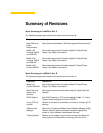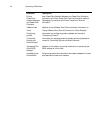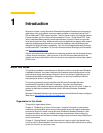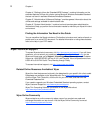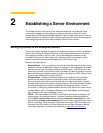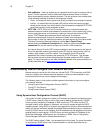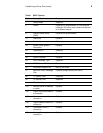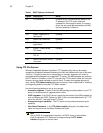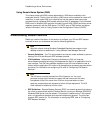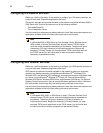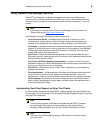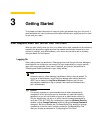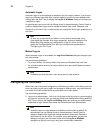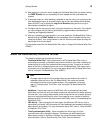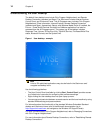
Establishing a Server Environment 7
Using Domain Name System (DNS)
Thin clients accept valid DNS names registered on a DNS server available to the
enterprise intranet. The thin client will query a DNS server on the network for name to IP
resolution. In most cases DNS is not required but may be used to allow hosts to be
accessed by their registered DNS names rather than their IP addresses. Every Windows
DNS server in Windows 2000 and later includes Dynamic DNS (DDNS) and every server
registers dynamically with the DNS server. For DHCP entry of DNS domain and server
location information, refer to "Using Dynamic Host Configuration Protocol (DHCP)."
Understanding Session Services
Before you use the information in this section to configure your ICA and RDP session
services, be sure you understand and use the following guidelines:
Note
Wyse thin clients running Windows Embedded Standard also support virtual
desktop solutions as described in
"Using VMware View Manager Services."
• General Guidelines - The Thin-client session services are made available by servers
hosting Citrix ICA and Microsoft RDP software products.
• ICA Guidelines - Independent Computing Architecture (ICA) is a three-tier,
server-based computing technology that separates the logic of an application from its
user interface. The ICA client software installed on the thin client allows the user to
interact with the application GUI, while all of the application processes are executed on
the server. For information on configuring ICA, refer to
"Configuring ICA Session
Services."
Note
The ICA server must be licensed from Citrix Systems, Inc. You must
purchase enough client licenses to support the total concurrent thin client
load placed on the Citrix server farm. A failure to connect when all client
seats are occupied does not represent a failure of Wyse equipment. The ICA
client software is installed on the thin client.
• RDP Guidelines - Remote Desktop Protocol (RDP) is a network protocol that allows a
thin client to communicate with the Terminal Service running on Windows 2000/2003/
Windows 2008 Server over the network. This protocol is based on the T.120 protocol
suite, an international standard multi-channel conferencing protocol. The thin client
supports RDP version 6.x. For information on configuring RDP, refer to
"Configuring
RDP Session Services."



